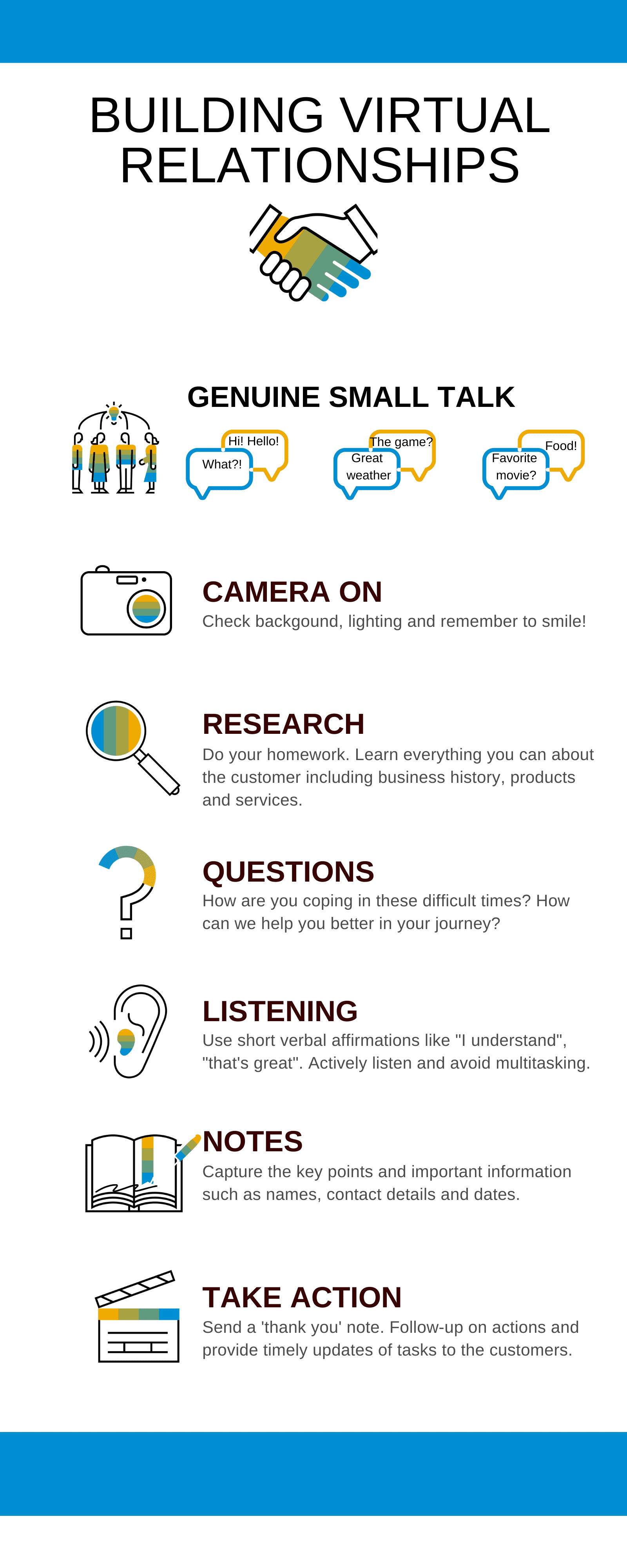The COVID-19 pandemic has grounded most business travel, cutting short in-person meetings, events and other activities through which customer relationships traditionally take shape. It has forced companies to manage relationships remotely, changing the way everyone operates. Working hours have grown longer, screen times have increased, and conversations have moved online. Adjusting to the “new normal” was tougher than many expected, and it is here to stay whether there’s a pandemic or not.
Despite the challenges, many have excelled at building and keeping customer relationships alive. Here are a few strategies that have worked for me in managing customer relationships remotely.
Genuine Small talk: For many people, small talk feels uncomfortable and inconsequential. But I find it to be vital. Starting off a conversation with non-business topics, something light that “breaks the ice”, sets a friendly tone and cultivates trust. Forgoing small talk can convey insecurity or, worse, a lack of concern.
Turning the camera on: Face-to-face meetings provide the advantage of being in the same room as the customer and the opportunity to accelerate the relationship and trust. A virtual meeting might do the same to an extent, if the camera is on. If you are reluctant to turn your camera on, there is no better time to get comfortable with it than now. Just being mindful of the background, lighting and appearance will help in engaging with the customers on a personal level. A good background is an opportunity to present the best identity.
Doing the research: Before Covid-19, lunches and dinners with customers were commonplace and made forging personal connections easy. When operating remotely, meeting the customer for the first time and getting their undivided attention can be challenging. Therefore, researching the individual and the business ahead of the meeting to learn about them, their organization, and understanding their entire journey with your organization will help in making that time worthwhile for everyone.
Asking questions: Researching about the customer is important but asking thoughtful questions such as the kind of challenges their organization is currently tackling and what can help them overcome those challenges will establish how genuine the intent is to help the customer. Evaluating how you can help them personally or professionally or connecting them with your broader network if they need further help will strengthen your relationship.
Actively listen: The worst thing to do is ask a question but then fail to listen attentively to the answer. Listening is tough when operating remotely because of the temptation to multitask. Using video rather than a phone call can help in preventing the tendency to multitask. Another best practice is to wait until the end to ask questions. Utilizing the time to understand more about the customer and not making it about you is important to prevent miscommunication and establish trust.
Make notes: Unless you’re confident of remembering every bit of the conversation, writing down key points from the meeting helps for future reference. Simple aspects such as the name of the customer, their challenges and interests, what they are looking forward to, and any names mentioned during the conversation are all important details that can be easily forgotten if they’re not written down.
Action: Leaving a conversation without a follow-up action is a way of bidding farewell to the relationship before it’s even begun. Instead, summarizing the conversation and providing a timeline to expect to hear back makes it easier to get in touch with the customer in the future and continue the relationship.
Building relationships virtually comes with its own set of challenges. However, it’s not entirely impossible to build and maintain long-lasting connections. Stay tuned for Part -2 of the blog where I will share strategies on how to maintain virtual relationships. To be continued.




